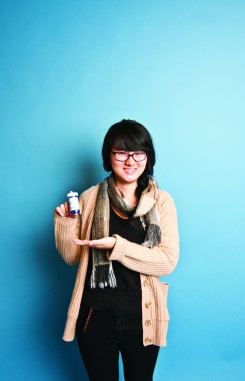With the end of the term approaching, you might be feeling a bit overwhelmed. Okay, a lot. You’ve got exams to worry about and term work to complete. But are the exams and term work really what’s causing your exhaustion?
Consider these symptoms: difficulty waking up in the morning, decreased energy levels, eating more carbs resulting in weight gain, difficulty concentrating, and less time spent with family and friends.
These symptoms might sound all too familiar to you — especially at this time of the year. Yet if you find yourself experiencing these symptoms, it might not just be the work-overload. It could be seasonal affective disorder.
Seasonal Affective Disorder, or SAD, is a form of major depressive disorder that emerges in the winter — though most people experience a less severe form of it called the winter blues. SAD affects six per cent of the US adult population, while the milder winter blues strike 14 per cent.
The disorder is linked to reduced light levels in the winter. The amount of light we’re exposed to mediates shifts in our circadian rhythms, and results in changes in serotonin metabolism. Serotonin is a neurotransmitter involved in regulating mood, appetite, and sleep. The body’s inability to break down serotonin is a characteristic of major depressive disorder, which explains why SAD results in the same symptoms.
If you think you’re experiencing the winter blues, here are some ways to brighten your mood.
Light therapy
 Light therapy is the most common form of therapy, and 60 to 80 per cent of SAD patients benefit from it. Your chances of relieving all your SAD using light therapy are similar to those of many antidepressants. However, like pharmacotherapy, light therapy carries the risk of developing manic symptoms. The recommended light dose is 30 to 90 minutes (10,000 lux) of light therapy per day, To increase effectiveness, it should be done earlier in the day rather than the night. Lights used for this kind of therapy have a specific amount of brightness and UV filtration.
Light therapy is the most common form of therapy, and 60 to 80 per cent of SAD patients benefit from it. Your chances of relieving all your SAD using light therapy are similar to those of many antidepressants. However, like pharmacotherapy, light therapy carries the risk of developing manic symptoms. The recommended light dose is 30 to 90 minutes (10,000 lux) of light therapy per day, To increase effectiveness, it should be done earlier in the day rather than the night. Lights used for this kind of therapy have a specific amount of brightness and UV filtration.
Exercise
Regular exercise is proven to help reduce stress and depressive feelings. It also helps improve self-esteem and sleep. Endorphins, your body’s natural painkillers, are released when you exercise. Those feeling depressed will also benefit from social support, so it’s a good idea to join a group exercise class. Try Hart House or the Athletic Centre for free drop-in classes.
Diet
Foods enriched in vitamins are known to improve overall bodily function. Vitamin C is found in berries, broccoli, oranges, and peppers. Margarine, nuts, and vegetable oil contain vitamin E. Insufficient vitamin D levels can put you at risk for depression. The same occurs when someone lacks omega-3 fatty acids. Fatty fishes, nuts, flaxseed, and green leafy vegetables are good sources of omega-3 fatty acids. If you find it difficult to enrich your diet with these nutrients, consider taking supplements.
Seek a psychologist
If you’re finding your mood levels are particularly low, you might want to get professional help from a psychologist. Cognitive behaviour therapy (CBT) helps to treat dysfunctional automatic thoughts and behaviours, behavior withdrawal, low rates of positive reinforcement, and rumination in patients with major depression. Pharmacotherapy with antidepressants like Zoloft and Prozac that are targeted at treating depression and can also be used to treat SAD.





